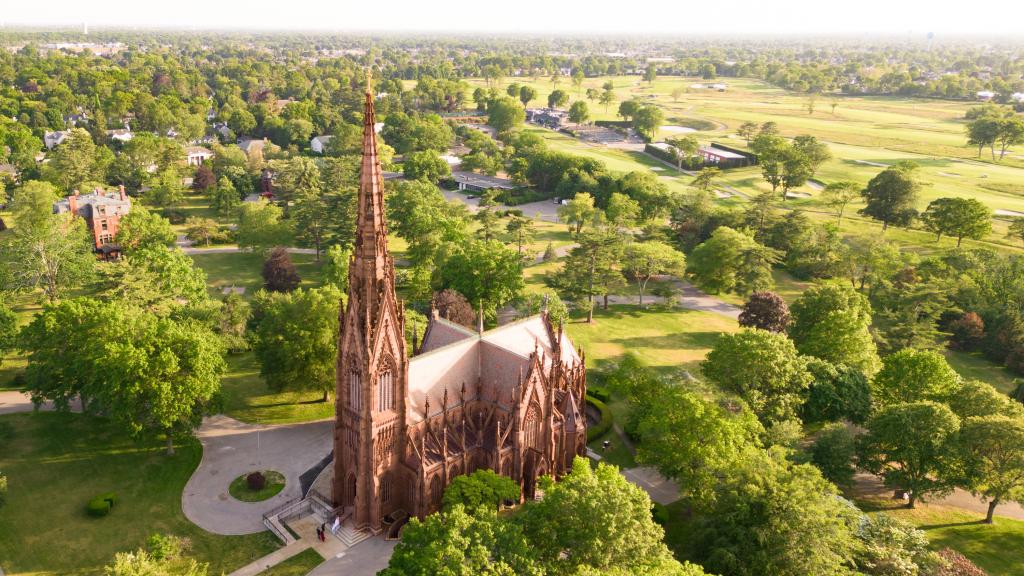New York’s Safest and Richest Suburbs: Beyond Just Wealth
In a surprising twist that has many Westchester County residents raising their eyebrows, Scarsdale—recently crowned America’s wealthiest suburb with a staggering mean household income of $601,193—failed to claim the top spot in a new study identifying “New York’s Safest and Richest Suburbs.” The comprehensive analysis by GOBankingRates examined much more than just household income, considering factors like crime rates and overall livability to determine which communities truly offer the best quality of life. Despite Scarsdale’s impressive wealth, it landed in fifth place, with Nassau County suburbs on Long Island dominating the top four positions. This result challenges the assumption that the highest income automatically translates to the most desirable living environment, highlighting the importance of safety, community amenities, and cost of living in defining truly exceptional suburbs.
Rockville Centre emerged as the surprising winner, securing the top position with a well-balanced profile that exemplifies suburban excellence. With a mean annual household income of $202,529—substantial though nowhere near Scarsdale’s figures—the Long Island community excelled thanks to its exceptionally low crime rates (just 0.235 violent crimes per 1,000 residents) and an impressive livability score of 86. Perhaps most notably, residents enjoy a relatively manageable cost of living at $101,463 annually for necessities, creating a favorable income-to-expense ratio that enhances quality of life. The neighboring Nassau County town of Lynbrook followed closely in second place with similar strengths, while Long Beach and Garden City rounded out the top four. This Long Island dominance suggests that Nassau County has found a sweet spot combining affluence with safety and livability that even wealthier areas struggle to match.
Scarsdale’s fifth-place ranking reveals the limitations of wealth alone in creating an ideal community. Despite having by far the highest household income on the list—more than double Garden City’s $292,919 in fourth place—Scarsdale was held back by a comparatively lower livability score of 69. This metric, which assesses factors like amenities, education, employment, and housing, suggests that extreme wealth might create certain community dynamics or cost structures that don’t necessarily enhance everyday quality of life. That said, Scarsdale’s crime statistics remain impressive, with the lowest violent crime rate on the list at just 0.056 per 1,000 residents. This nuanced positioning highlights how community excellence emerges from a balance of factors rather than excellence in any single category, even one as impactful as household income.
The regional rivalry between Westchester and Nassau Counties adds another fascinating dimension to the study results. While Nassau County claimed the glory of the top four positions, Westchester County demonstrated greater depth by placing eleven suburbs in the top twenty compared to Nassau’s nine. Beyond fifth-place Scarsdale, Westchester communities like Eastchester (#7), Tarrytown (#9), Harrison (#11), and Mamaroneck (#12) showcased strong combinations of safety, wealth, and livability. This broader representation suggests that Westchester offers more consistent quality across its communities, even if its very best don’t quite match Nassau’s elite suburbs when all factors are considered. For residents and potential homebuyers, this depth might actually represent a more valuable attribute, providing more options for finding the right community that balances cost, safety, and amenities according to individual priorities.
Looking beyond the top five, the study reveals interesting patterns about what makes communities truly exceptional. Several towns demonstrate that middle-class incomes can support outstanding communities when paired with thoughtful planning and strong safety records. Floral Park (#6), with a mean household income of $195,150, and Eastchester (#7), at $209,817, both outranked far wealthier communities through their combination of low crime rates and strong livability scores. At the other end of the spectrum, even communities with relatively modest mean incomes like Peekskill (#14) at $115,364 managed to earn spots on this prestigious list by offering safe neighborhoods, reasonable living costs, and good community amenities. This diversity suggests that truly exceptional suburban living comes from a careful balance of factors rather than simply maximizing any single metric.
The complete dataset reveals additional insights about the relationship between wealth, safety, and community quality in New York’s suburban landscape. When examining the cost of living across these top twenty communities, a significant range emerges—from Peekskill’s modest $67,469 annually to Rye’s substantial $190,450. This variation highlights how geographic location, housing stock, and community amenities contribute to vastly different financial requirements for residents, even within the same metropolitan area. Similarly intriguing is the variation in crime rates, with property crime generally proving more common than violent crime across all communities, though both remain well below national averages in these top suburbs. The most comprehensive lesson from this study may be that suburban excellence emerges from finding the right balance point between affordability, safety, amenities, and income levels—a balance that each of these twenty communities has achieved in its own unique way, creating distinctive environments that appeal to different priorities and preferences among New York’s suburban residents.















